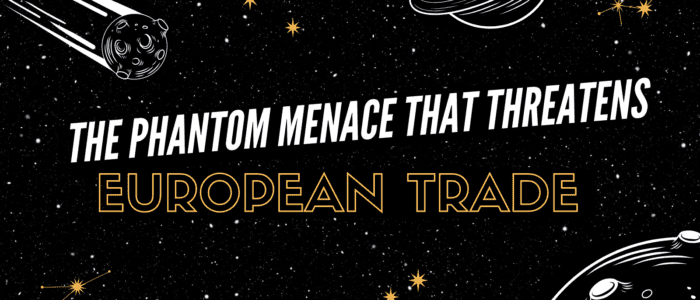Published
The Phantom Menace that Threatens European Trade
Subjects: European Union WTO and Globalisation

This piece was co-authored with Isabel Pérez del Puerto, a journalist and communicator in financing for development.
In the last quarter of 2021, fear of Covid-19 was temporarily overtaken by an alternative terror: shortages. Bottlenecks in global supply chains, delays in ports and the closing of factories in Asia did not bode well for the upcoming Christmas holidays which could have been without toys, electricity or cheers. “Your eyes can deceive you; don’t trust them,” Obi-Wan Kenobi says to Luke Skywalker in the movie franchise Star Wars. In the end, it was the omicron coronavirus variant that stole the show, while there was no news about shortages of PlayStations, Peppa Pig dolls or Paw Patrol toy cars.
Shortages of some products were and remain a real problem, but how big is this problem? And does it has the capacity to condition European trade policy? While consumption in developed countries saw a sudden spike after a long period of hibernation due to Covid-19, the cogs of the global economy, also on stand-by, took longer to turn on and reach the capacity to satisfy the rise in demand from customers around the world used to receiving their purchases within 24 hours. Fortunately, just as the shortages of face masks and other medical material eased after a few months, the global economic system managed to deal with the peak demand of Christmas shopping. Despite this victory, the risk of shortages of products such as medicines and microchips has fueled debate about the economic, political and social costs of European trade dependency with the rest of the world.
Should we be afraid? In international trade, the problem of dependency appears when a company, or a country, becomes the main provider of certain goods or services and uses this power to impose its own market conditions or achieve its political goals. In the case of Europe, the red lines for dependency can be drawn for those products whose imports from outside the EU represent the majority of its total imports, and which are concentrated in a few countries. Following this definition and breaking EU imports into 9,000 product categories, we can identify those goods for which imports from outside the EU represent more than 75% of total imports, and we can measure the concentration of these imports with the Herfindahl–Hirschman index of at least 0.25. This indicator defines markets where production is concentrated in a few firms. The result is that there are only 324 product categories, representing 2.3% of EU total imports, where the EU can be considered dependent.
In the debate about shortages and trade dependencies, international trade has been used as a scapegoat
Despite these relatively low figures, it should be added that not all countries must be put in the same basket, nor all the products are equally important. The United States, the United Kingdom and Switzerland are market economies that follow similar principles to the European economy, where the separation of political and economic power takes precedence. China, on the other hand, follows different rules and according to many analysts, is willing to take advantage of its dominant position in the production of certain goods to reach its political goals. Nonetheless, the threat of the Asian giant is also relative. The European Union is dependent on the production of goods coming from China in 21 product categories that represent 0.7% of EU total imports. In this group of products, there are agricultural goods like bamboo and ginseng as well as textile products, made of silk or yarn, that cannot be considered vital for the European economy. What’s more, these products can be substituted for similar ones if needed. There are also pharmaceutical ingredients, rare earths such as scandium and materials for the production of electronics that condition the European economy to a greater extent, but they only represent 0.1% of EU total imports.
In the debate about shortages and trade dependencies, which is legitimate and relevant, international trade has been used as a scapegoat. “Fear is the path to the Dark Side,” says Master Yoda. The truth is that global markets, despite all their challenges, act as insurance against potential disasters: the higher the number of suppliers – domestic or foreign – the lower the risk of not being able to buy the product that you need because your main supplier has failed to deliver. To lower trade dependencies, the European Union should analyze in detail which products the EU is really dependent on other countries for, increase innovation within the EU and raise the number of suppliers by supporting the participation of the least developed countries in global trade to encourage a more inclusive and diverse international trade.
This opinion piece was originally published by El Pais, it can be found here.
Changes to some figures were made on 14 February 2022.